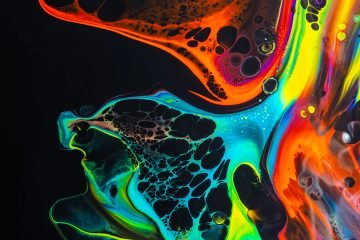Evolution of portraiture through out history
The evolution of portraiture throughout history is a fascinating journey that reflects changes in artistic styles, cultural values, and technological advancements. From ancient times to the modern era, portraiture has played a significant role in capturing the likeness and character of individuals. Here’s a brief overview of its evolution:
- Ancient Portraiture (Prehistory to Classical Antiquity): Portraits in ancient times were primarily created for religious and commemorative purposes. Early examples include cave paintings and rock carvings representing individuals or deities. In ancient Egypt, pharaohs were depicted in a rigid and idealized manner in statues and paintings. Greek and Roman portraiture sought to portray a person’s physical likeness, emphasizing naturalistic features and realistic expressions.
- Medieval and Renaissance Portraiture (5th – 15th centuries): During the Middle Ages, portraiture became less common, and religious themes dominated the art. However, the Renaissance period saw a revival of interest in individualism and humanism. Artists like Leonardo da Vinci, Raphael, and Titian created lifelike portraits that captured the sitter’s personality and emotions. The emergence of oil painting techniques allowed for greater detail and depth in portraiture.
- Baroque Portraiture (17th century): The Baroque period saw a shift towards dramatic and emotive representations. Artists like Rembrandt and Velázquez created portraits that revealed the inner psychology of the subject. Light and shadow were used to highlight specific features and create a sense of depth.
- Rococo and Neoclassical Portraiture (18th century): The Rococo style emphasized elegance and ornamentation, often depicting aristocrats and nobility in lavish settings. With the rise of the Neoclassical movement, portraiture returned to a more classical and restrained approach, inspired by ancient Greek and Roman art. Artists like Jacques-Louis David excelled in this style.
- Realism and Impressionism (19th century): The 19th century witnessed the emergence of Realism, which sought to portray subjects as they were, often reflecting the social realities of the time. Artists like Gustave Courbet and Édouard Manet challenged traditional conventions of portraiture. Later, the Impressionists focused on capturing the fleeting effects of light and atmosphere, resulting in more spontaneous and less formal portraits.
- Modern and Post-Modern Portraiture (20th century and beyond): The 20th century saw various movements and styles, including Cubism, Expressionism, and Surrealism, which influenced portraiture. Artists like Pablo Picasso and Frida Kahlo experimented with innovative ways of representing the human form and mind. With the advent of photography, artists like Andy Warhol explored the concept of celebrity and mass-produced portraits.
- Contemporary Portraiture: In the contemporary era, portraiture continues to evolve, embracing diverse mediums, styles, and concepts. Digital art, multimedia installations, and conceptual approaches have expanded the possibilities of representing individuals and their identities.
Throughout history, portraiture has served not only as a means of capturing physical appearances but also as a reflection of society, culture, and the individual’s sense of self. It remains a vital form of artistic expression, continuously adapting to the changing times.



 Protected by Patchstack
Protected by Patchstack
0 Comments